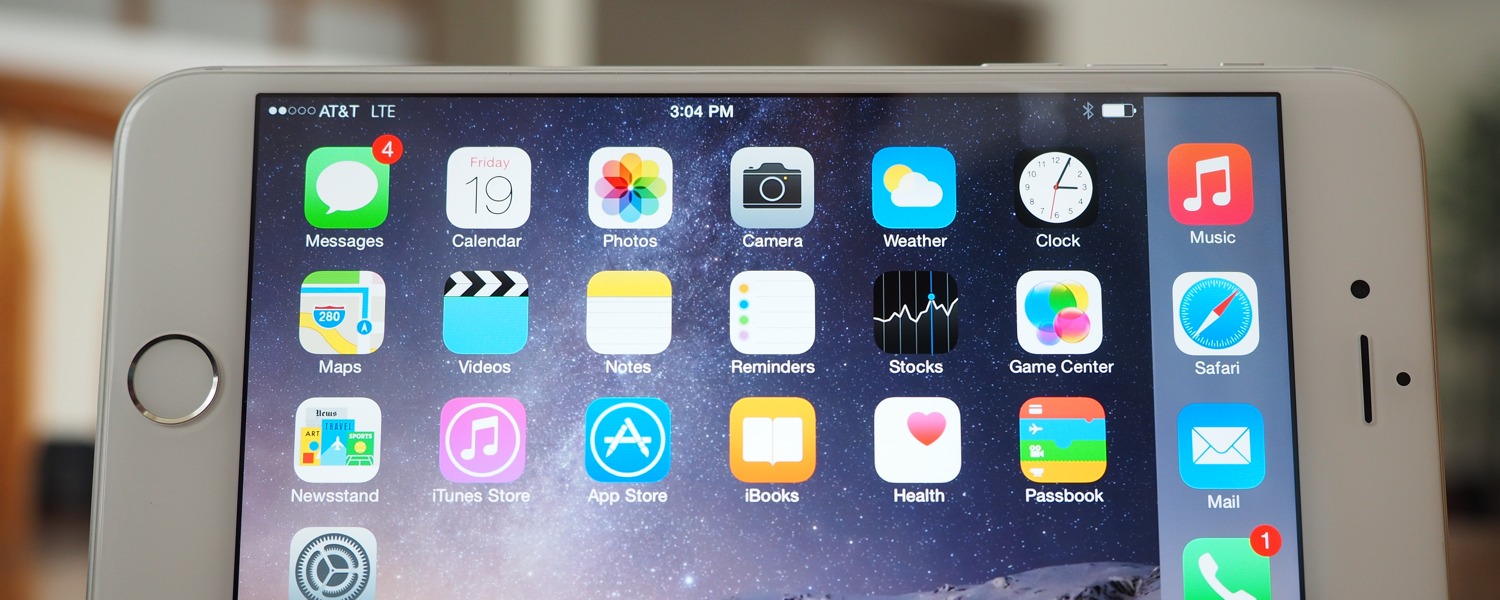Camera, Slo-Mo Recording, iOS 8
The iPhone 6 Plus is equipped with an 8-megapixel iSight camera with 1.5µ pixels. It uses a 5-element lens with f/2.2 aperture and is powered by an all-new sensor. What's more, Apple has implemented phase detection autofocus, or what they call "Focus Pixels," for speedier focusing and optical image stabilization - a feature not found in the smaller iPhone 6.
In my experience, the iPhone 6 Plus is able to lock focus a bit quicker than the iPhone 5s but not drastically so. As is typically the case with photos shot on a mobile device, they look really incredible until you transfer them over to a computer. It also probably doesn't help that I'm accustomed to shooting images with a higher-end mirrorless camera and only rely on my mobile device if it's the only option with me at the time, but I digress.
That said, the image quality I've seen from the iPhone 6 Plus is still great for a camera phone and demonstrates how far cell phone cameras have come over the past several years. The optical image stabilization will no doubt be an asset when shooting in low light or to those with unsteady hands but it's the added manual controls in iOS 8 that I'm even more excited about.
Apple's camera app has been pretty limited up to this point in terms of user control. I get that most people simply want a point-and-shoot experience where the camera handles all of the hard work. And to its credit, the camera usually does get it right; but not always. Sometimes it'll over-expose or under-expose a shot or sometimes you just want a bit more control.
With iOS 8, you now have a manual exposure slider and the ability to lock the exposure / focus right in the main camera interface. Perhaps now I'll be able to retire my third-party camera app once and for all. If you're interested in learning more about your smartphone's camera and how to get the most out of it, I suggest you check these 10 Tips for Good Smartphone Photography.
As for video, the iPhone 6 Plus can capture 1080p clips at 30 fps or 60 fps and slow motion clips at 120 fps or 240 fps. There's also built-in stabilization when recording videos which works surprisingly well. I didn't have a ton of opportunities to try out the video recording capabilities but hopefully these sample clips will give you an idea of what the iPhone 6 Plus is capable of.
iOS 8
iOS 8 has been described as the biggest change in the history of Apple's mobile operating system, although you may not realize it at first glance. While not visually as dramatic of a change as iOS 7 was, there's a bit more functionality packed into iOS 8 once you start digging into it - especially on the larger iPhone 6 Plus.
I'll reserve a full-blown evaluation of iOS 8 for a later date although there are some aspects that I do want to hit on here today, most of which are exclusive to Apple's new phablet.
Third-party keyboards are now officially supported in Apple's mobile OS for the first time. Most of the popular third-party keyboard apps have already arrived including Swype, SwiftKey and Fleksy. Having never tried a third-party board, I randomly selected Swype to experiment with.
I understood the general concept behind Swype but still needed to consult a tutorial on YouTube to fully grasp exactly how it works. After a bit of practice, I can certainly see what all of the fuss is about and likely won't be switching back to the default Apple keyboard anytime soon.
That's probably a good thing as Apple didn't exactly do the best job with its iOS 8 keyboard.
One of the common complaints with Apple's keyboard on the iPhone 5s and previous was the size of the keys. People with large fingers often found it difficult to type efficiently in portrait mode because they keys were so small and cramped together. Landscape was a bit better and with the added real estate of the iPhone 6 Plus, surely it meant the keys would be larger, right?
Well, no. Instead of offering larger keys, Apple took the existing keyboard and added a bank of common punctuation keys on the right and editing shortcut keys on the left. While that may be convenient for some, I would have simply preferred the standard keyboard with larger keys.
Apple did get quite a bit right with iOS 8. With the iPhone 6 Plus, for example, users can rotate the phone to landscape view on the home screen. Additionally, Apple has added dual pane views in a number of apps including Mail, Messages, Calendar, Weather and Stocks which gives the phone more of a tablet feel by increasing productivity.
Other changes include a condensed Notification Center, Family Share, Spotlight search that can now tap into more sources and a Health app that serves as the hub for all things health and fitness, just to name a few. The latter likely won't see much use right now but will come full circle once the Apple Watch arrives early next year.










